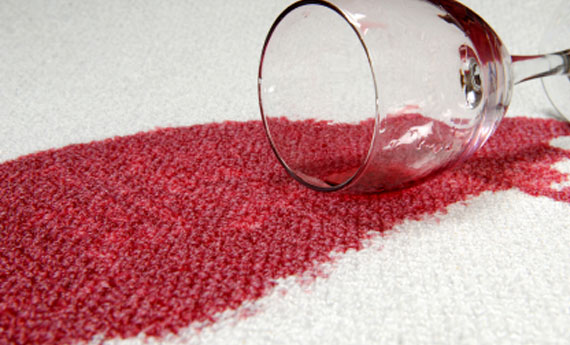Carpet mold is a hard pill to swallow and an even harder pill to tackle. Once rooted, mold can grow quickly, spreading to the surrounding areas and setting up shop on everyday items. When it comes to carpet mold, damp basements and rooms with poor ventilation are the most prone to falling victim. So, how do you know if your carpet has been overtaken by unseen mold? Here are a few telltale signs.
Odors
Odors- in particular musty odors- can be one of the first signs of mold that pops up. Although a musty odor may be very noticeable, more often than not it’s hard to detect if you spend a lot of time in the vicinity of the affected carpet. If this is this case, be sure to take note of instances where visitors report smelling a musty scent in your home or office, as this can indicate the growth of mold under or on your carpet.
Increased allergies
When mold is present, you’ll probably notice an increase in the amount of suffering in those who have allergies. This is because mold can set into motion bronchitis, breathing problems, asthma, and of course- allergies. If you or someone in your household is suddenly plagued by uncontrollable bouts of these illnesses, you should check your carpet for mold to be sure that it isn’t the cause.
Colored growth
Once mold has reached an advanced stage, it makes its appearance in the form of black, white, brown, and green growth that can be noticed within the carpet fibers. These discolored patches are a result of mold colonies multiplying.
Wet or damp carpet
Carpets that are regularly subjected to moisture for a long period of time or that aren’t adequately dried after being wet have the potential to grow mold. Mold needs moisture to thrive and damp carpets are the perfect place for the spores to grow. In basements, a common cause of mold is leaky pipes, so be sure to keep an eye out for leaks. If excess water is due to carpet cleaning, call a Pleasanton CA carpet cleaning company to thoroughly wash and dry the carpet next time it needs TLC.
Positive test kit results
Mold test kits can be purchased from local hardware stores. The test kits test the airflow going over the carpet and, if mold spores are present, catch them, causing them to multiply. This is perhaps the most effective way of identifying mold growth.
Noticeable growth under the carpet
Although mold might not be present on your carpet, it may be sprouting beneath it. A good way to keep mold away is by regularly checking for mold on the floor beneath your carpet. Life your carpet up and examine the floor. Look for discoloration and keep en eye out for any kind of strange smell.
Mold can get out of hand in the blink of an eye. It doesn’t have to, though, as it can be prevented and stopped in its tracks if you know how to identify its warning signs.








 The carpet , especially if precious, is a textile of the house that is difficult to maintain. Not only because it requires continuous suction of dust to prevent the proliferation of mites and dirt, but especially for the difficulty of washing. Not all carpets come into the washing machine – some with the appliance just do not disagree – and proceeding by hand is really tiring. Are there any easy methods, natural remedies , to remove a carpet?
The carpet , especially if precious, is a textile of the house that is difficult to maintain. Not only because it requires continuous suction of dust to prevent the proliferation of mites and dirt, but especially for the difficulty of washing. Not all carpets come into the washing machine – some with the appliance just do not disagree – and proceeding by hand is really tiring. Are there any easy methods, natural remedies , to remove a carpet?
